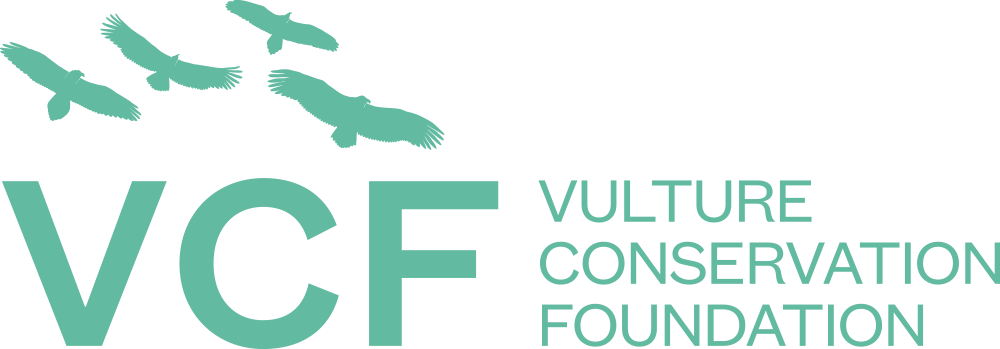
2020 was a challenging year for all of us, but our work never stopped, and we continued to protect and conserve Europe vulture species despite the extra difficulties.
Counting down the days until 2021, we will publish a blog post sharing the highlights of each of Europe’s vulture species’ conservation achievements, starting with the Cinereous Vulture.
Bulgaria – Vultures Back To LIFE
Today, the only remaining Cinereous Vulture breeding colony in the Balkans exists in Dadia, Greece. The Vultures Back To LIFE project is reintroducing the Cinereous Vulture to Bulgaria to establish a breeding population and boost the species’ Balkan population.
This year, the VCF secured and transported 15 birds for the project. The birds donated to the project hatch in the wild in Extremadura, Spain, and enter recovery centres as they were suffering from malnutrition and health issues. Extremadura is the most important Spanish region for the species, very likely to be the most significant region for this species globally with 461 breeding pairs in Sierra de San Pedro and 376 pairs in Monfragüe, making Junta de Extremadura the ideal partner to donate birds to the reintroduction project.
After the vultures recover, they enter AMUS wildlife hospital to spend the necessary quarantine period and perform the necessary tests to the birds. Then, the birds are transported to Bulgaria by the VCF. These 15 Cinereous Vultures arrived in Bulgaria in June 2020 and entered acclimatization aviaries to get used to their new home until their eventual release into the wild. This was the third transport of Cinereous Vultures from Extremadura to Bulgaria — the first one took place in 2018 with 12 birds, and the second one in 2019 with ten birds. So, with this year’s transportation, a total of 37 Spanish Cinereous Vultures are now secured for Vultures Back to LIFE reintroduction project! On top of this, seven more captive-bred birds were provided by the Cinereous Vulture EEP/EAZA, coming from different European zoos.
The reintroduction project in Bulgaria is overall going well, with several individuals released in Vratchanski Balkan, a new release site, and seven birds released in total this year. As a result of these efforts, Cinereous Vultures are flying far and wide across the Balkans again. We hope that one day they will nest, maybe in some of the artificial platforms that have been built for them. In the meantime, some birds have established stable pairs and captive birds were seen mating.

Another important aspect of this project is monitoring their movements to understand the birds’ behaviour and identify threats. One famous bird – Riga – returned to the Bulgarian mountains after wandering to the Alps, while another one went all the way to Ukraine, where it eventually died. Some other reintroduced birds met their death too. Sadly, one died by electrocution, another one by shooting. Although their deaths were tragic, monitoring the birds allowed the project team to immediately address these threats. For instance, the four electric poles where the Cinereous Vulture Extremadura was killed were insulated, and an active investigation to prosecute the poacher/s responsible for killing Ultron launched shortly after.
France – Cinereous Vulture successfully reintroduced
The Cinereous Vulture reintroduction project in France is a success story, with the species now firmly re-established after going extinct in the country. Running since 2004, the reintroduction project in southern France received the last birds this year. On 24 June, the five Cinereous Vultures donated by the Junta de Andalucía left Spain and started their journey to France for their eventual release in Verdon.
The reintroduction projects in France are led by LPO andVautours en Baronnies, and the VCF closely support these efforts. All these projects have become a reality thanks to the great support of Spain, particularly Junta de Andalucía and Junta de Extremadura, the recovery centres CREA, AMUS and Los Hornos, and also thanks to the contribution with chicks hatched in captivity by the Cinereous Vulture EEP.
Portugal – monitoring birds
The population in Spain increased from 250 pairs in the 1980s to 3000 pairs currently, and thanks to this increase, the species also naturally recolonized Portugal in 2010. The Portuguese population has been steadily increasing ever since, and today totals 35 pairs. Birds from the new colony in northeastern Portugal were tagged for the first time within the LIFE Rupis project. A young Cinereous Vulture got a second chance at life after the bird was rescued, rehabilitated, and released in Portugal — saving just one Cinereous Vulture in Portugal is significant as the breeding population is still small and fragile. Cinereous vultures tagged in Portugal usually wander extensively around Iberia, with one flying above the Real Madrid stadium!
You can track the movements of the Cinereous Vultures we follow with GPS tags by visiting our online public maps.
If you want to help vultures during this holidays season, here are three things you can do:
- Sign up to our newsletter to stay updated, and for offering to help vultures when such need arises
- Please donate to the VCF and help us continue our work protecting vultures
- Spread the word on social media and pledge to discuss vultures and their importance to three other people this holiday season
Thank you for your support — we hope you are safe and healthy, and have a very happy new year!









